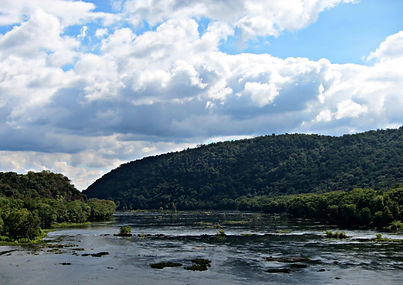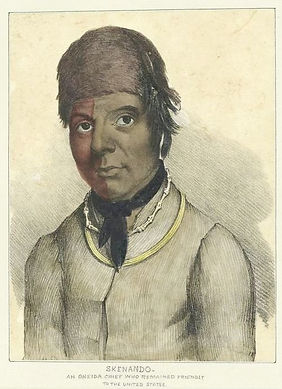#64 Shenandoah

La Citta Vita. (2010, December 17). Shenandoah River, aerial. Flickr. Licensed under CC BY-SA 2.0.
Sheet Music & Lesson Plan
with additional resources
In the works!
Sheet Music
Lesson Plan
Video: A lovely performance of James Erb's 1975 arrangement by the UNT A Cappella Choir, conducted by Allen Hightower.
University of North Texas College Concerts. (2018, July 5). UNT A Cappella Choir: Shenandoah. [Video]. YouTube. https://youtu.be/m8yBPMrlz9w?si=xfaasOaUFhGwbNzw
Video: Another lovely a cappella rendition. VOCES8 performing the Hewitt-Jones arrangement.
University of North Texas College Concerts. (2018, July 5). UNT A Cappella Choir: Shenandoah. [Video]. YouTube. https://youtu.be/m8yBPMrlz9w?si=xfaasOaUFhGwbNzw
Video: Upbeat arrangement of Shenandoah.
The Petersens. (2023, October 6). Shenandoah - The Petersens (LIVE). [Video]. YouTube. https://youtu.be/YK4Ndt4uqlE?si=HaxOOP6Q362CmZ9p
%20Eb%20Recommended%20Key.png)
In the works!
In the works!
More Song Background

Image courtesy of Six Nations Public Library (c. 1840s).
Song Background
In the works!
References
Dowd, D. R. (1992). War under heaven: Pontiac, the Indian nations, and the British empire. The John Hopkins University Press.
Gilbert, R. (2005). Sailor songs and sea shanties: Maritime music of the 19th century. Routledge.
Green, R. (2009). The Shenandoah Valley: An illustrated history. The History Press.
Hale, A. D. (2007). Songs of the fur trade: Music of the voyageurs. University of Minnesota Press.
Knapp, S. (2010). American folk music: A regional exploration. Oxford University Press.
Lytle, L. (1989). Indian captivity narratives: The stories of those who were taken. University of Chicago Press.
Bingham, G. C. (1845). Fur traders descending the Missouri [Oil on canvas]. The Metropolitan Museum of Art, New York, NY. https://www.metmuseum.org/art/collection/search/10159
Unknown. From the public domain U.S. Naval Historical Center: https://www.history.navy.mil/content/history/nhhc/our-collections/photography/numerical-list-of-images/nhhc-series/nh-series/NH-85000/NH-85964.htmlOriginally uploaded to EN Wikipedia as en:File:CSSShenandoah.jpg by en:User:McMullen 19 November 2004., Public Domain, https://commons.wikimedia.org/w/index.php?curid=7860376
Unknown. (ca. 1840s). Skenando: An Oneida chief who remained friendly to the United States [Hand-colored lithograph]. Six Nations Public Library. https://www.snpl.ca
What is the song about? Really.
Several theories about the meaning of the song, "Shenandoah" are presented here. You decide.
Theory 1 - Shenandoah River/Valley
The song is about the Shenandoah River and Shenandoah Valley in Virginia and West Virginia. The lyrics express a longing for the beauty and peacefulness of the river or the valley, missed by early settlers and travelers during their journeys.
"The Shenandoah Valley, with its lush landscapes and winding river, has long captured the imagination of those who settled there, making it a natural symbol of both beauty and yearning for those far from home" (Green, 2009, p. 52).

By AgnosticPreachersKid - Own work, CC BY-SA 4.0, https://commons.wikimedia.org/w/index.php?curid=36374115
Theory 2 - Chief Skenandoa
Does the name "Shenandoah" refer to the Oneida Chief? "Skenandoa, a leader of the Oneida Nation, played a pivotal role in the American Revolution, choosing to side with the American colonists against the British, an act that led to immense sacrifices for his people" (Dowd, 1992, p. 118).
There is no direct evidence linking the song to John Skenandoa, he did fight "seven long years" in the Revolutionary War.

Image courtesy of Six Nations Public Library
(c. 1840s).

By photographer not identified - From the public domain U.S. Naval Historical Center:
Theory 3 - The Song as a Sea Shanty (Ship Theory)
"Folk songs like 'Oh Shenandoah' were often adapted by sailors who used them to express their longing for distant shores, particularly when they found themselves separated from loved ones during long voyages" (Gilbert, 2005, p. 87).
Several vessels were named, 'Shenandoah.' The ship pictured was the CSS Shenandoah, a Confederate raider during the American Civil War.
Some believe the song was adopted by these sailors, as a sea shanty; the rhythm of the song matched the motions required to hoist the sails.
Theory 4 - Native American Love Story
(Trader & Chief's Daughter)
Could "Shenandoah" be the song of a love story?
"The colonial period was marked by complex relationships between European settlers and Native American tribes, and the theme of forbidden love, often between a trader and a chief's daughter, played out in the cultural myths of the time" (Lytle, 1989, p. 230).

Bingham, G. C. (1845). Fur traders descending the Missouri [Oil on canvas].
Theory 5 - A Folk Song of the Fur Trade

By aimee castenell - Flickr: missouri river, CC BY-SA 2.0, https://commons.wikimedia.org/w/index.php?curid=18058625
Was the song sung about the Shenandoah Valley in Virginia while the fur traders were working out west?
"Fur traders, traveling along the Missouri River, often sang ballads like 'Oh Shenandoah' to pass the time, with the song's lyrics reflecting their homesickness and longing for the familiarity of the land they had left behind" (Hale, 2007, p. 142).
Did the song originate with the fur traders along the Missouri River in the early 19th century?
OR . . .
Theory 6 - The Song has an Evolving Origin
Because the song was passed down orally and adapted by different communities (especially during the time of Westward Expansion), the meaning and origin of "Oh Shenandoah" could have evolved over time.
As the song spread, new lyrics and versions were created, each possibly reflecting the emotional experiences of the singers, such as nostalgia, longing, or search for cultural identity in foreign parts of a country -- new to them.
"As folk songs like 'Oh Shenandoah' were passed from one generation to the next, their meanings shifted, reflecting the lives of those who sang them and the times in which they lived" (Knapp, 2010, p. 193).
